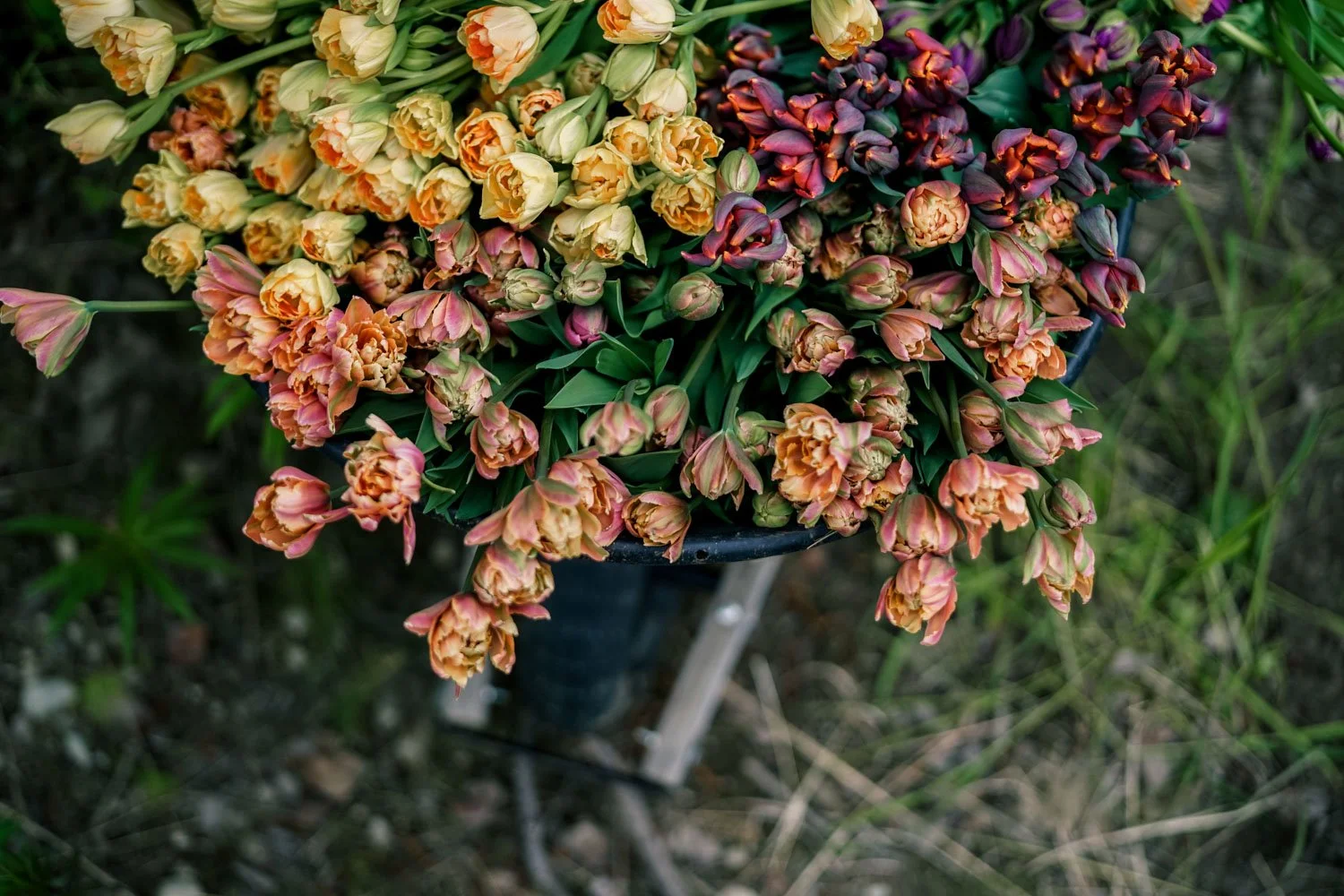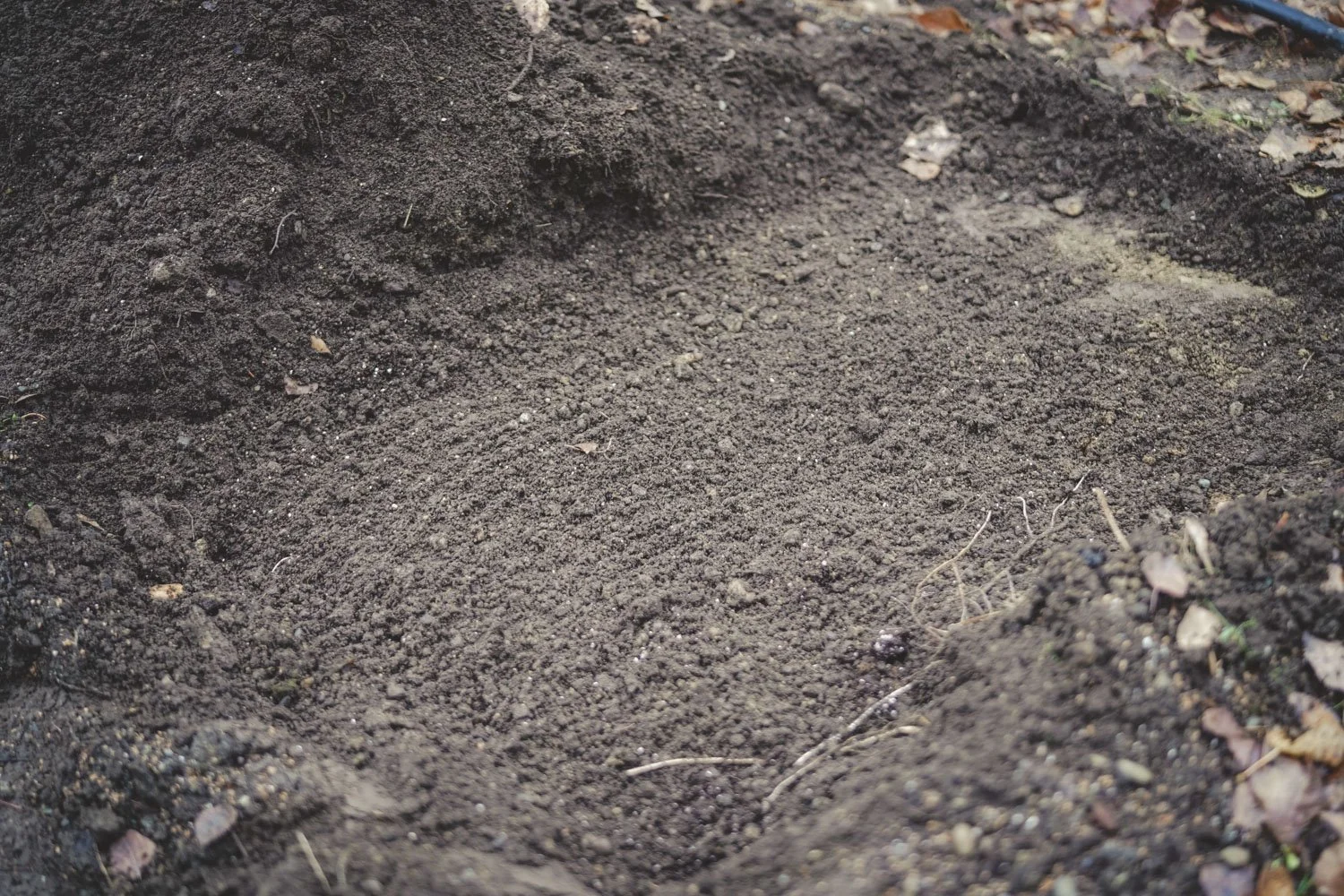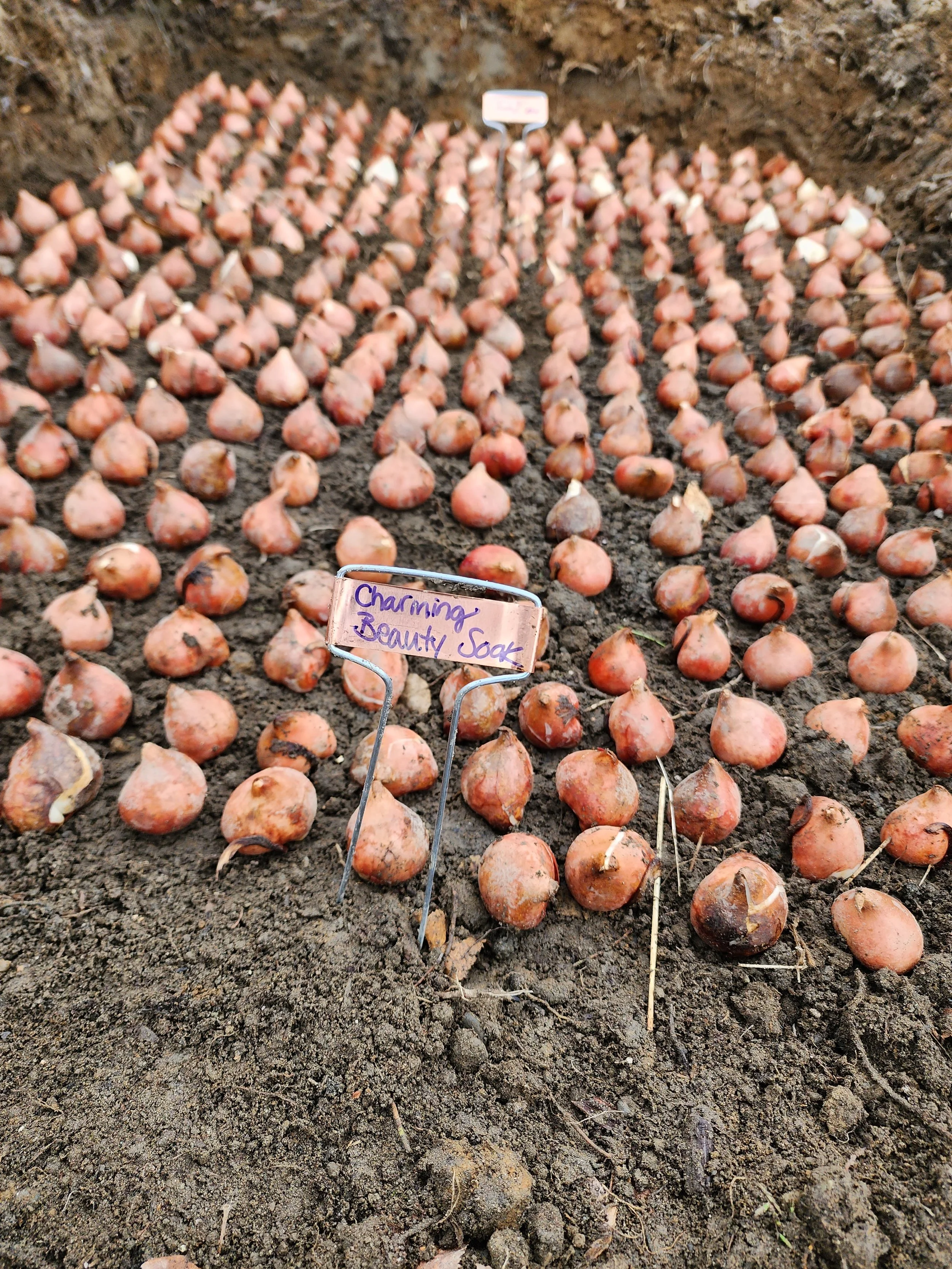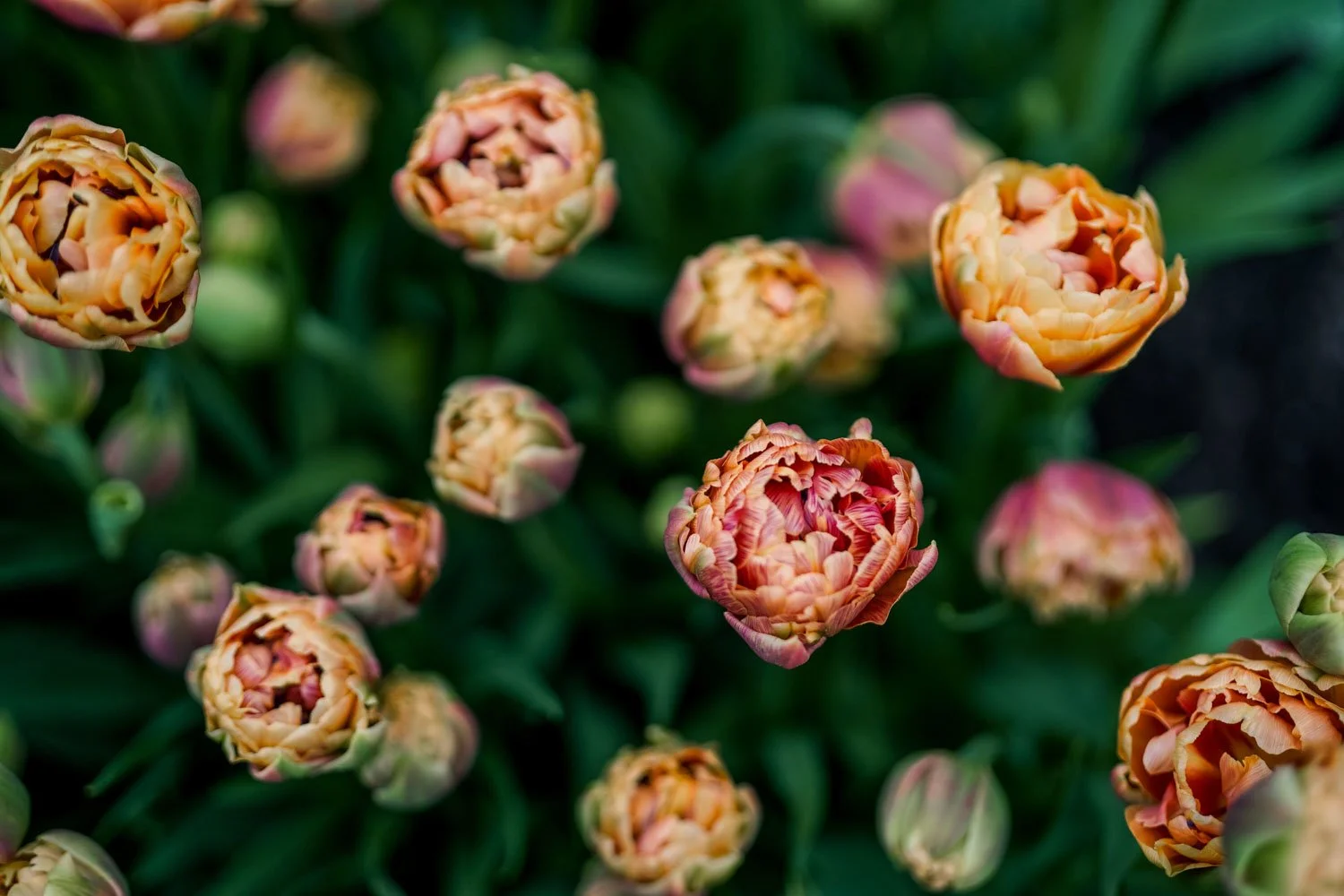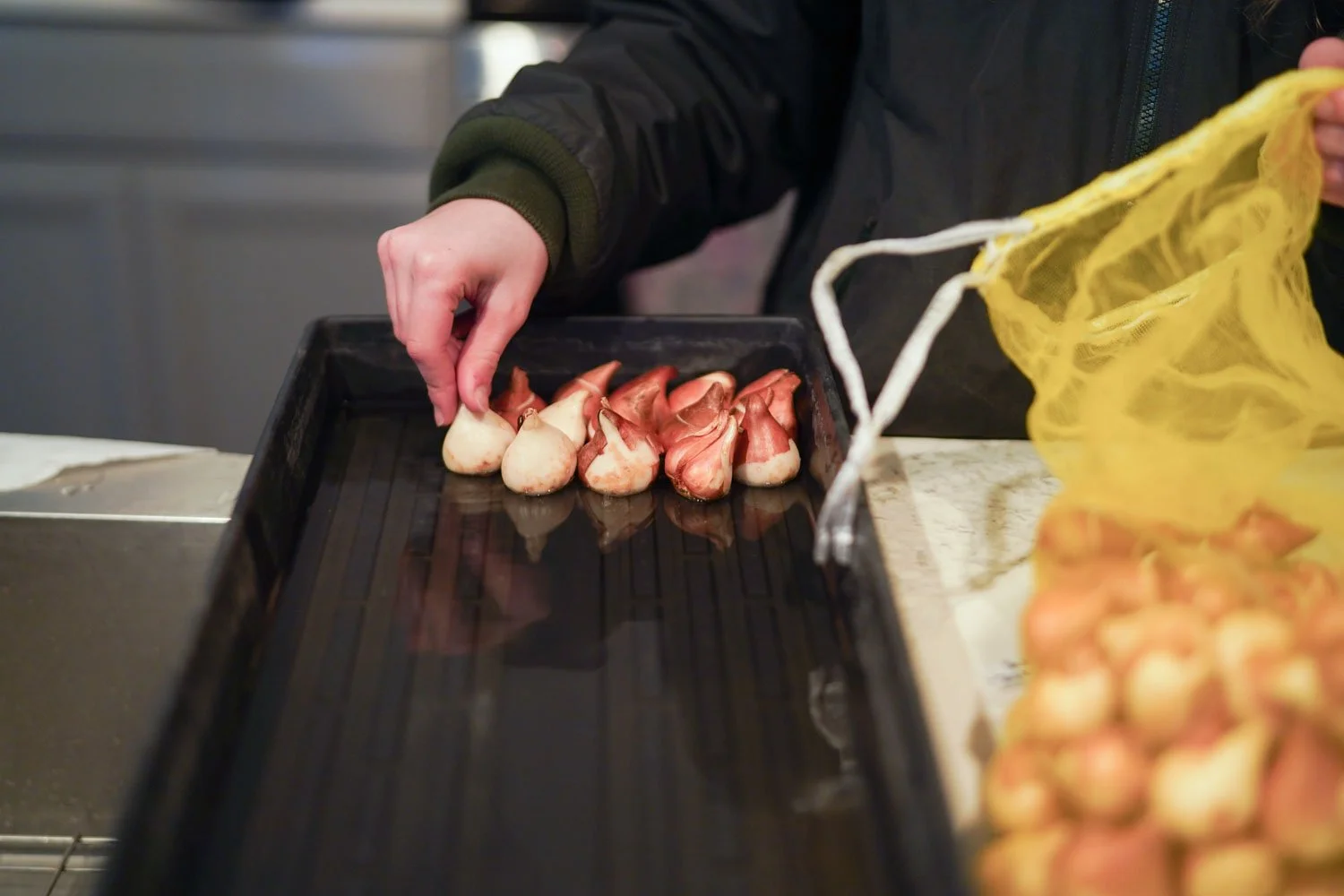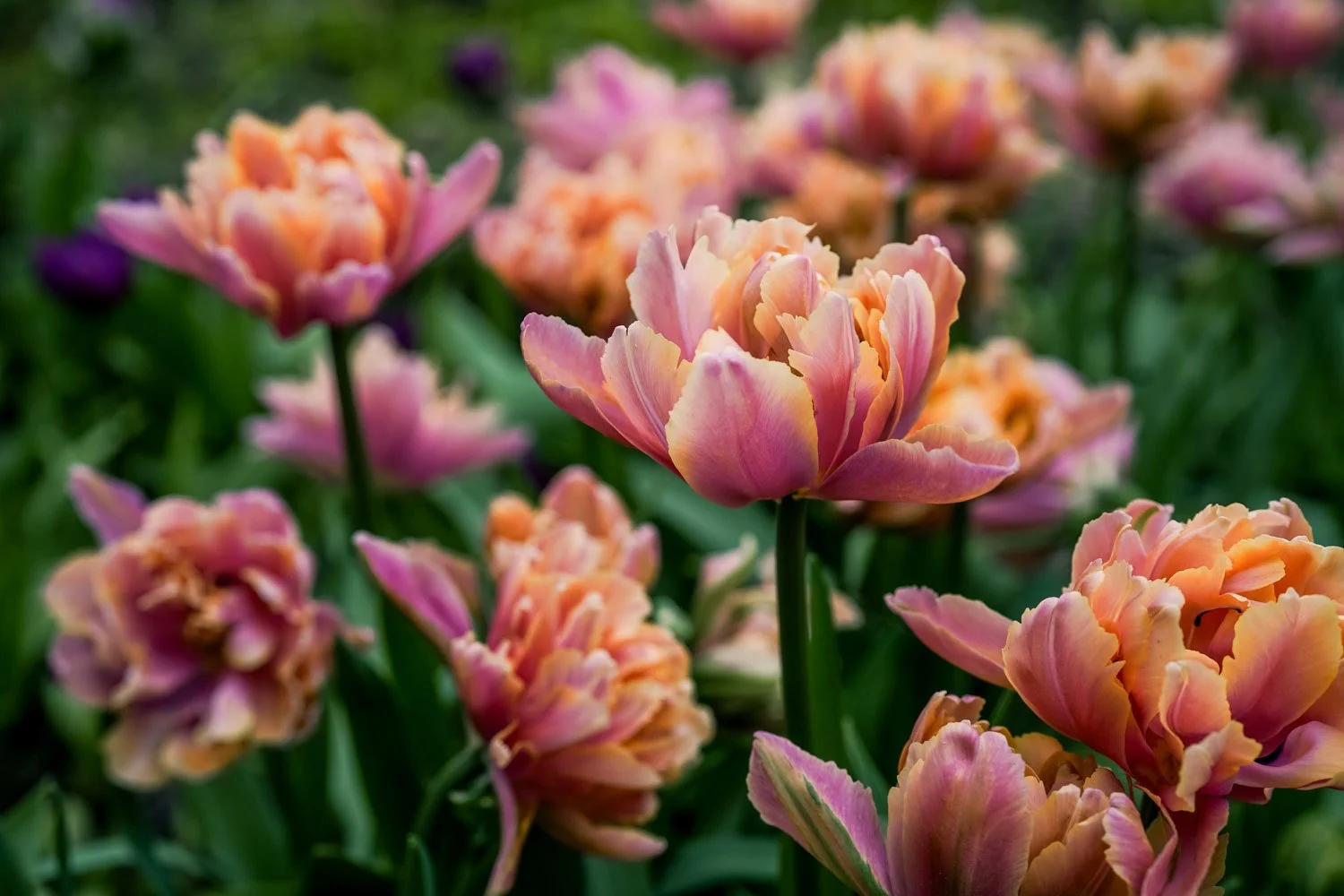Fall Planted Tulips
Planting Tulips in the Fall: Your Guide to Spring Blooms
Nothing says spring like the charm of blooming tulips! In order to make that happen, you need to plan for that now! You might be thinking, "Fall just arrived, and we're talking about spring?" But with the early frost and snowflurries, it's time to prepare your garden for the beauty of blooming tulips. This blog post will be your trusty companion in preparing your garden beds for planting tulips this fall. With a touch of effort and some insider tips, you'll be on the path to a breathtaking tulip showcase next spring.
Zone 3/4 Gardening Challenges:
Gardening in Zone 3/4 can be a unique adventure, often overlooked in the sea of gardening information geared toward warmer regions. The longer summer light in Alaska is a double-edged sword, offering blessings and challenges for light-sensitive crops.
Choose your Tulip Bulbs Before we dive into the gardening process, let's talk about the crucial step of selecting the right tulip bulbs. Tulips come in various colors, shapes, and sizes, making them a versatile choice for any garden. Tulips are also usually categorized by when they bloom but most reach maturity pretty close to each other in Alaska. At Wildwood Flower Co, we're particularly fond of fancy and unique double flowering varieties and we choose them for their stem length! Tulip bulbs typically come as the ground starts to freeze, but don't worry; we can plant them throughout October and beyond if your dirt is prepared.
Finding the Perfect Spot:
A secret to successful tulip planting is choosing the right location. Tulips thrive in partial shade to full sun, so scout your garden for a spot that enjoys at least 6-8 hours of sunlight daily. If your soil isn't quite ideal and doesn't drain well, think about creating a trench or raised beds and improving it with organic matter like compost or green sand.
Dig a tench while the soil is still workable.
Prepare the Trench for Planting Instead of digging individual holes, consider creating a trench to plant multiple tulip bulbs at once. Dig a trench about 6-8 inches deep, ensuring the garden soil is loose and crumbly to allow for easy root penetration. If you have issues with voles or mice in your area, sprinkling cinnamon at the bottom of the trench can help deter them. Before planting, pre-soak* your bulb bottoms in water for 20 minutes. Arrange your tulip bulbs in the trench with the pointed side facing up and the flat ends facing down, just like you would with eggs in an egg carton! Yes, you can plant them close together, but be sure they're not touching!
Soaked Bulbs
Spring Blooms
Pre-soak Notes: Ive done a bunch of experimenting and had some great calls with my bulb supplier busting myths and finding a way to make it possible to grow more here as the shipping delays are a real struggle with fall bulbs. One of the struggles for planting late is the overwhelming advise of watering your bulbs in. The struggle here is that if we water well and get a freeze the bulbs wont make it. I tested three ways to combat this issue. Soaking or peeling and then not watering them in. I think the best result was soaking the bulb butts in warm water for 20 mins before planting. If the ground is freezing at night and is unworkable I advise not watering them. The soaking allows the bulb to be hydrated enough and then if it gets cold too fast the bulb will just grow roots in the spring.
Pre-soak bulbs in warm water for 20 mins.
Backfill and Water:
For those planting early, once your tulip bulbs are comfortably nestled in the trench, cover them with soil. Give them a good drink to help them settle in and establish their roots. However, if you're planting late, consider the pre-soak method mentioned earlier to avoid potential freezing issues.
Apply Mulch for Insulation As winter approaches, it's important to provide your tulip bulbs with a layer of protection against harsh frost. Apply a layer of mulch, such as straw or wood chips, to insulate the soil and shield the bulbs from extreme temperature fluctuations. If we get heavy snowfall, even better – the snow will provide insulation and a slow, steady water source as it melts during the spring thaw!
Anticipate Spring Blooms With the arrival of spring, your diligent efforts will be rewarded as your tulips emerge from their winter slumber. Keep in mind that different tulip varieties may bloom at slightly different times, but rest assured, your garden will soon burst with vibrant colors as our longer sun exposure in Alaska tends to make the flowers more saturated!
Planting tulips in the fall may require a bit of planning, but the beauty they bring to your garden in the spring is well worth the effort. Whether you're a seasoned gardener or a novice, this guide has equipped you with the knowledge you need to succeed. Happy planting!

